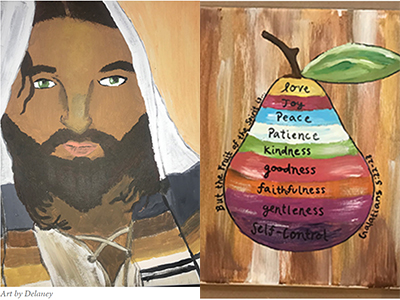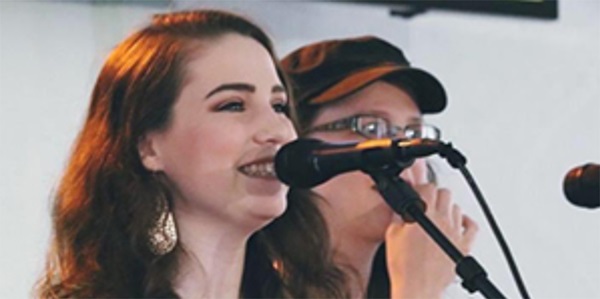When I was a young girl, I counted down the months and days until the children’s Christmas play at church. Once the roles were assigned, I studied my lines devoutly and listened to the CD every day on the way to school. I loved the play, not only because I liked being the center of attention (what can I say—I lived for the spotlight!), but also because I felt the presence of God when I sang and danced. I remember singing the words to “I Can Only Imagine” at about 10 years old, and truly imagining what the face of God looked like and what heaven would feel like. Art led me into the presence of God and helped me think theologically even as a child.
As I grew older, I learned just how much I loved music. I learned to play piano and guitar and wrote my own songs. I joined the youth group’s worship band and discovered that I felt the most fulfilled when I used my musical talents for worship leading. I became involved in theatre, where I gained close friends and learned valuable lessons about walking in another’s shoes.

When I went to college on a musical theatre scholarship, I knew I loved theatre but my dedication to it started to fizzle out as I realized that I wanted to direct my passion for art into the local church. I didn’t want to be a Broadway star like my classmates; I wanted to be a pastor who incorporated art into worship.
This summer through the Candler School of Theology Advantage internship, I have had the opportunity to explore the important role of art in worship. Specifically, I have focused on how art helps us understand God in new ways, helps bring peace and comfort in difficult times, helps us process feelings like grief, loneliness, confusion, and trauma, and gives new meaning to familiar sacraments and creeds.
Candler School of Theology is one of the 13 United Methodist seminaries supported by the Ministerial Education Fund apportionment of the United Methodist Church.
Often, we do not have words for what we are feeling or do not know how to pray aloud the pain we have. Especially during a summer of great uncertainty due to a global pandemic and the injustice of racism, art can help us navigate these experiences and communicate honestly with the Divine. When words fail, melodies and watercolors and dance movements can step in. A quote that has stuck with me this summer is, “Art provides a vehicle with which to approach God.” Whatever we choose to offer before God, whether it be our joy and praise or our grief and anger, art can help us express it.
Forms of art like painting, music, and dance are powerful and help us worship when we are at a loss for words. But sometimes we forget that our words can be art as well.
Worship and communion with God is not just going to church on Sundays or reading your Bible which are both fine
But God is much much bigger that this... God can’t be put into a box so we search for ways through the abyss
And come out on the other side with dancing, melodies, poetry, and pastels
excerpt from a story by Delaney Wray, rising third-year Candler School of Theology, MDiv student from Birmingham, Alabama
Ministerial Education Fund
One of seven apportioned giving opportunities of The United Methodist Church, the Ministerial Education Fund is at the heart of preparing people for making disciples of Jesus Christ for the transformation of the world. The 13 United Methodist seminaries help students to discover their calling through the challenging curriculum. The fund enables the church to increase financial support for recruiting and educating ordained and diaconal ministers and to equip annual conferences to meet increased demands. Please encourage your leaders and congregations to support the Ministerial Education Fund apportionment at 100 percent.





